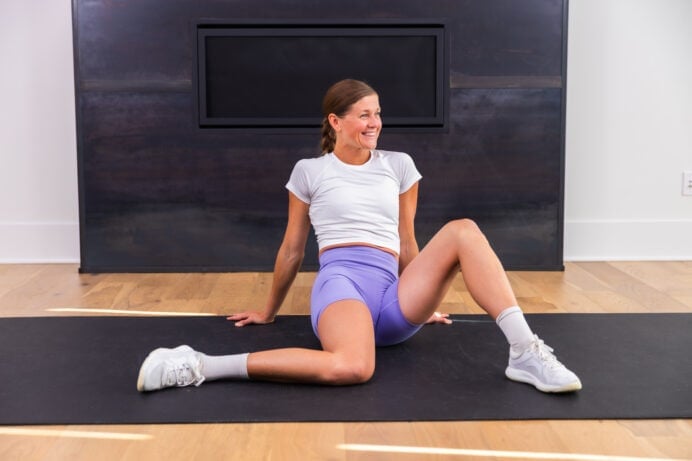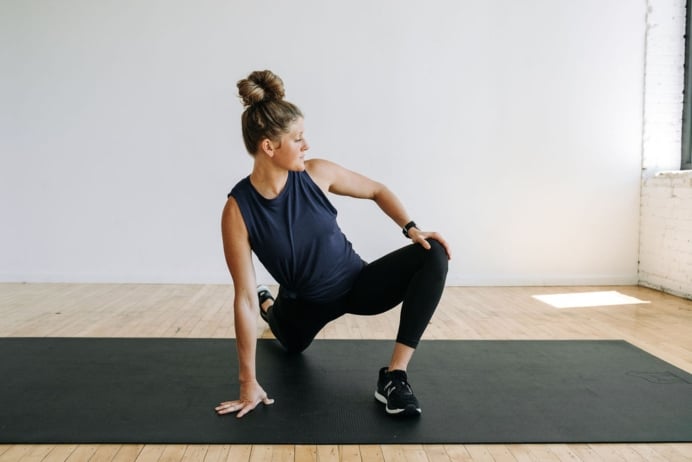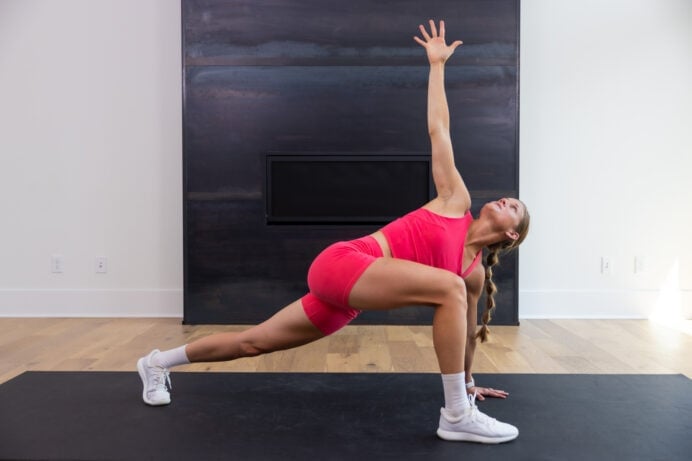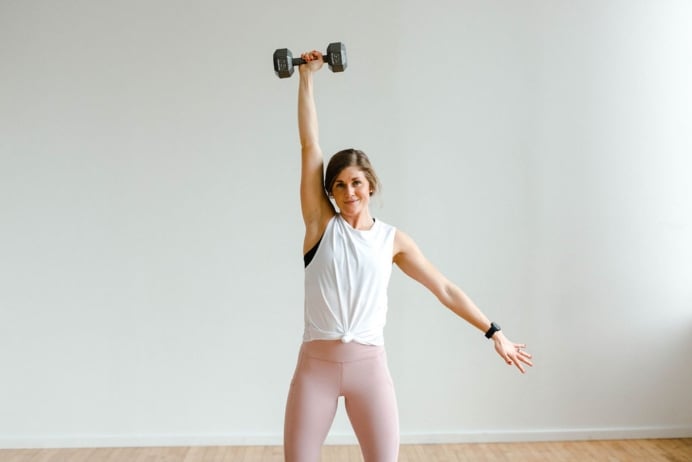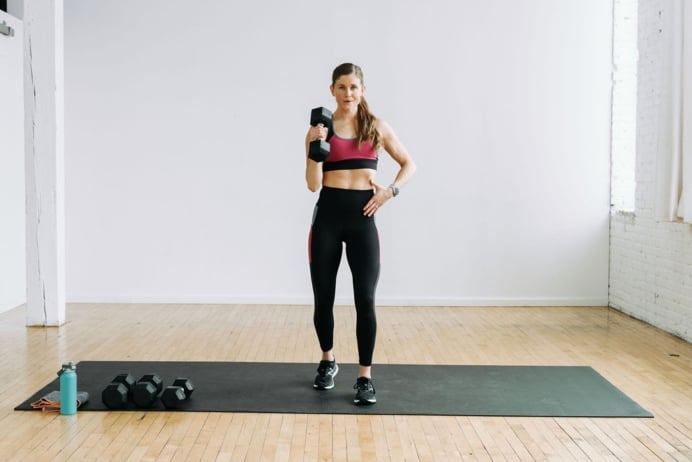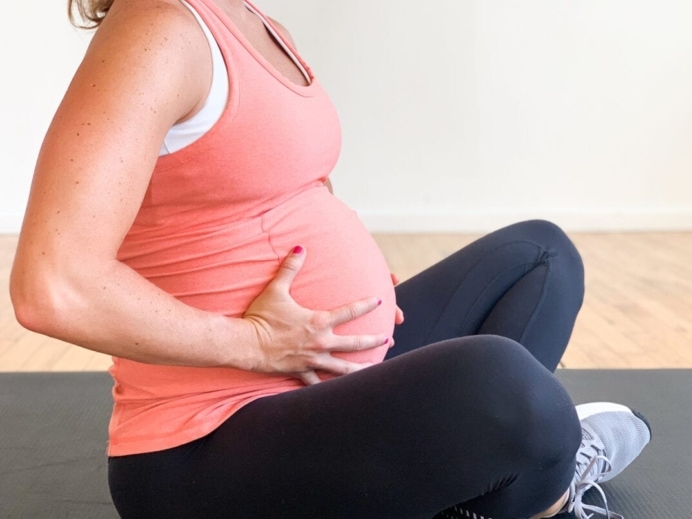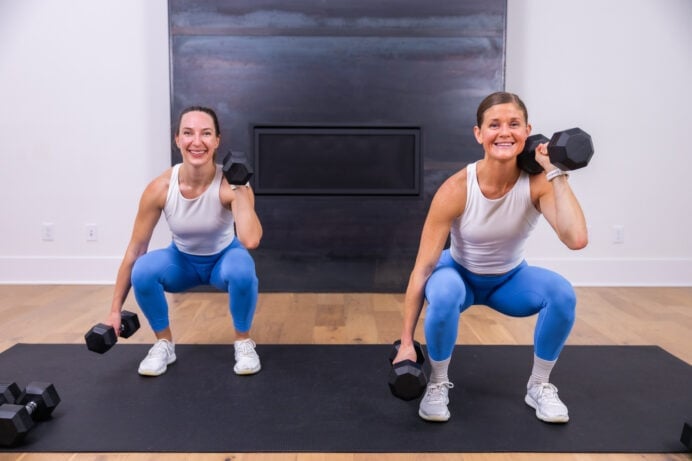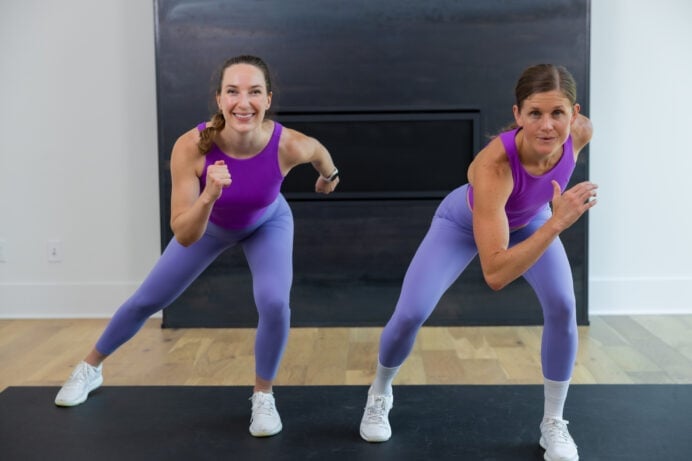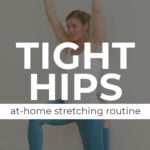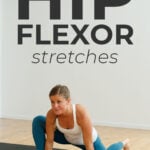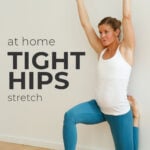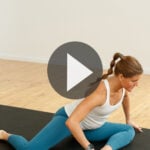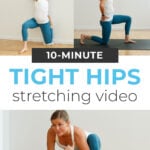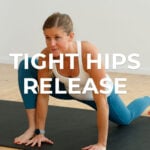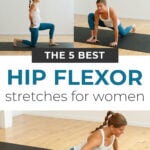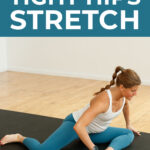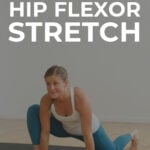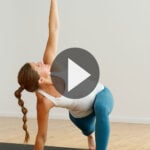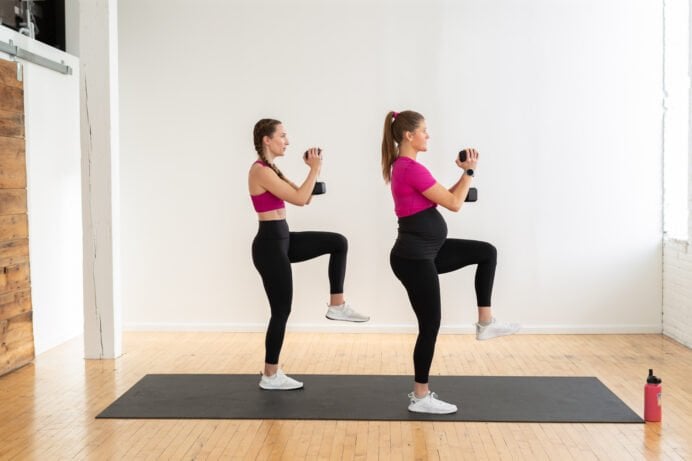
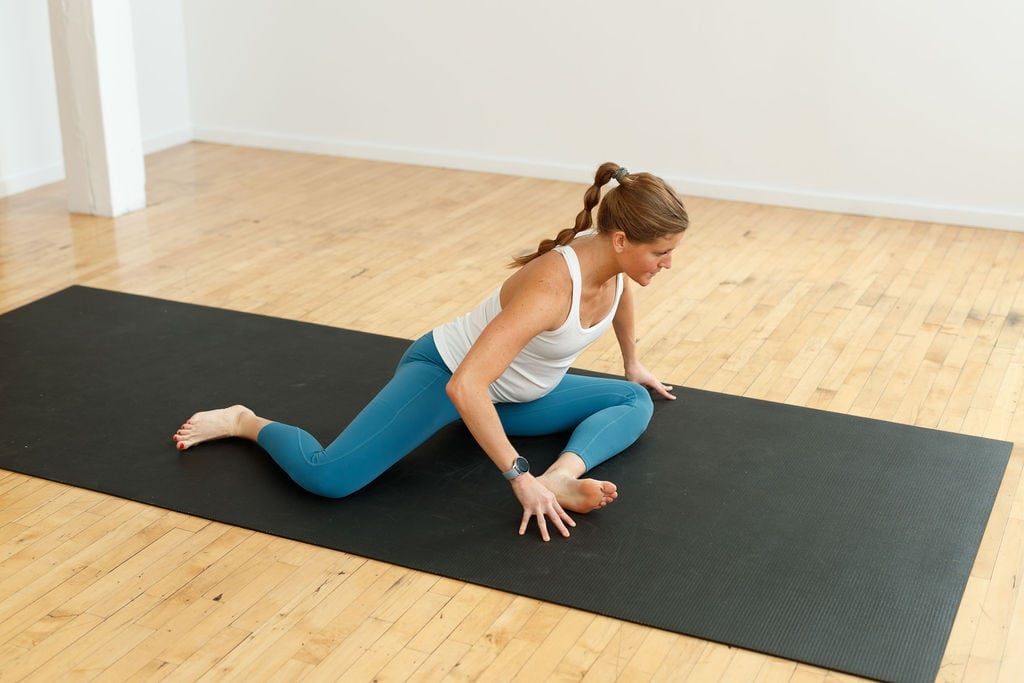
5 BEST Hip Flexor Stretches
Loosen tight hips in just 10 minutes with this dynamic hip flexor stretching routine at home. These are 5 of the best hip flexor stretches to relieve hip pain and reduce lower back pain!
Struggle with tight, painful hip flexors? Or just want better range of motion in your squats and lunges?
Your hip flexor muscles are the group of muscles near the top of your thighs, including: rectus femoris, iliacus, psoas, iliocapsularis, and sartorius muscles.
These muscles let you do everyday activities like walk, run, kick and bend to pick things up. Tight hip flexors can be uncomfortable on their own, but can also cause secondary issues like lower back pain, hip pain and injury. Physical therapists suggest the best way to prevent injury is to work on hip mobility, stretching your hip flexors regularly.
Whether you have a sedentary or active lifestyle, these five hip flexor exercises will benefit both beginners and advanced athletes.
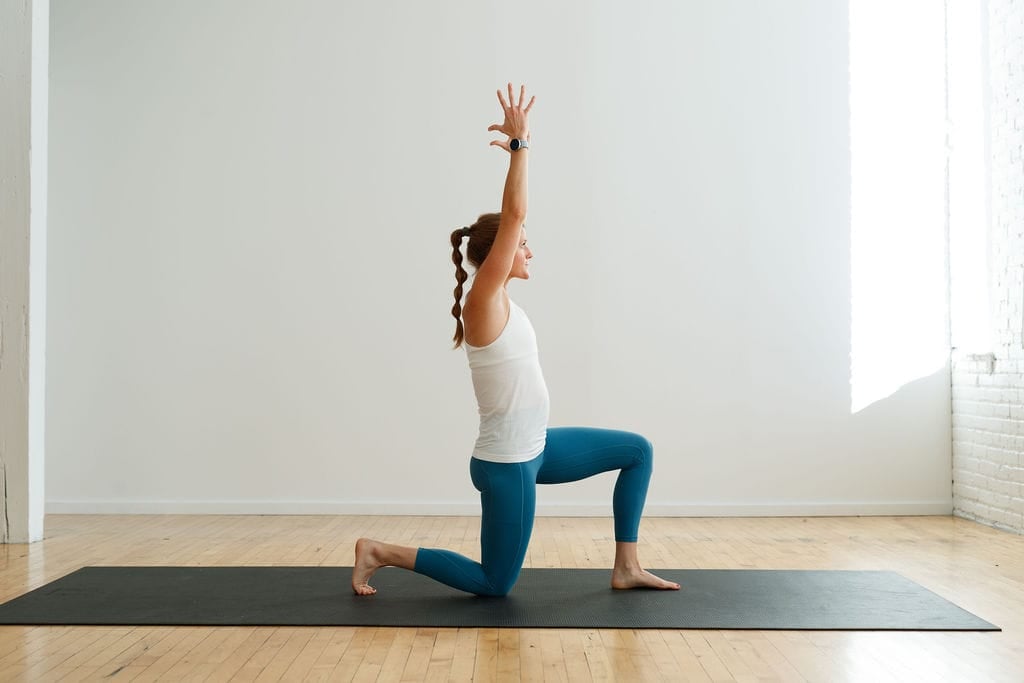
How to Stretch Hip Flexors: 10-Minute Hip Flexor Stretch Routine
This stretching routine is for anyone looking to:
- Loosen Tight Hip Flexors
- Gain Flexibility
- Increase Range of Motion
- Prevent Injury
Strengthening and protecting your joints takes time and consistency (just like building muscle).
Add these five hip flexor stretches to your training routine one to three times a week.
Stretch Routine Equipment:
No equipment, just your bodyweight and yoga mat.
Stretch Routine Instructions:
Follow along with the guided Hip Flexor Stretch Routine on YouTube, led by certified personal trainer, Lindsey Bomgren.
The Hip Flexor Stretch Routine Looks Like This:
- 5 Hip Flexor Stretches
- Hold or move through each stretch for 45 seconds, follow by a 15 second transition between stretches
- Repeat all 5 hip flexor stretches x 2 sets (switching sides as needed)

Prefer to Watch On YouTube?
Workout Outline
- Half Kneeling Hip Flexor Stretch
- Spiderman Hip Stretch
- 90/90 Hip Stretch and Switch
- Side Pretzel Hip and Quad Stretch
- Lying Knee to Chest Pulls
How to Stretch Hip Flexors
Half Kneeling Hip Flexor Stretch
Targets: Hips, hip flexors, groin, quads, glutes, low back and core.
Note, this hip flexor stretch is about the anterior pelvic tilt, not how far you can push your hips forward. Do not hyperextend your back or dump the hips.
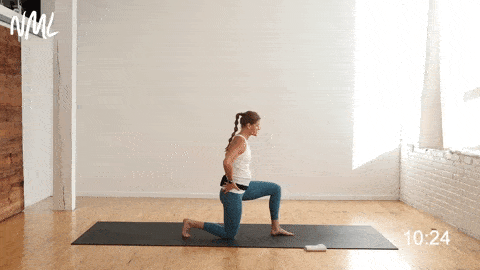
How To Do A Half Kneeling Hip Flexor Stretch
- Start in a low lunge position with your right leg forward, right foot planted on the ground and left leg back. Left knee on the ground behind you, back left toes tucked under.
- Square your hips to the front by tucking your tailbone. Your right knee and left knee should be at a 90-degree angle (you don’t need to lean forward).
- Option to raise both arms directly overhead.
- To further intensify the stretch, you have the option to raise your left knee off the mat and find a low lunge position (squeezing your glutes).
- Hold the stretch for about 45 seconds, release and repeat on the left leg during the next set.
Spiderman Hip Stretch
Targets: Hips (abductors), hip flexors, groin, quads, glutes, hamstrings and low back.
The Spiderman stretch is also known as ‘the world’s greatest stretch’!
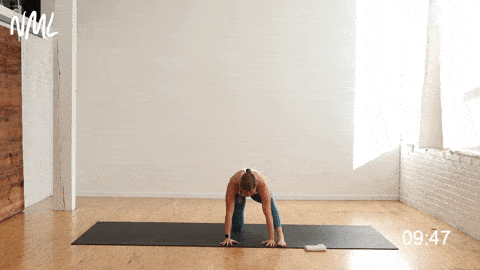
How To Do The Spiderman Hip Stretch
- Start in a low lunge position with your right leg forward, right foot planted on the ground and left leg back. Left knee on the ground behind you, back left toes tucked under.
- Square your hips to the front by tucking your tailbone.
- Place both hands flat on the mat. Right hand inside your right foot.
- Gently rock your hips forward, thinking about dropping your left hip flexor to the mat in front of you while your right knee drives out to open your right hip flexor. Option to raise your back left knee off the mat. Left hand stays planted on the mat.
- Then, gently rock your hips back, straightening your front right leg while finding a 90-degree angle in your back leg (half splits stretch).
- Continue to rock the hips forward and back for 45 seconds, release and repeat on the other leg during the next set.
90/90 Hip Stretch And Switch
Targets: The muscles around the hip joint — glutes, piriformis, psoas, hip flexors, hip abductors and hip adductors.
A great stretch for both internal hip rotation AND external hip rotation.
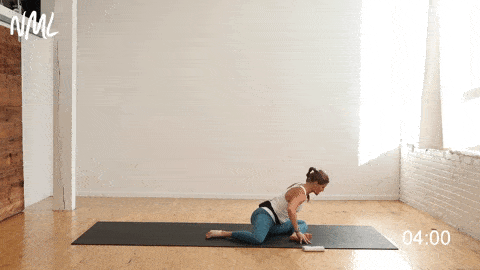
How To Do A 90/90 Hip Stretch And Switch
- Start in a seated position, right leg in front of you, left leg behind you and both legs bent at 90 degrees. Create some distance between your front right heel and your back left knee.
- Right shin is parallel to left shin (flat on the floor). Slowly lean forward, directly over your right shin (avoid leaning toward your right knee, lean directly into the middle of your shin).
- Think about driving your right knee and left knee into the mat at the same time as you hold this stretch. Hold this position for a few seconds.
- With each exhale, bring your chest closer to the floor.
- Then, shift to the other side so that your left leg is parallel in front of you, right leg behind you. Slowly lean forward, directly over your left shin, stretching the left outer glute and opening the right inner hip.
Side Pretzel Hip and Quad Stretch
Targets: Quadricep muscles, outer glutes, hip flexors, low back and lumbar spine.

How To Do A Side Pretzel Hip And Quad Stretch
- Start lying on your back, legs lifted with knees stacked over hips; knees bent at 90 degrees.
- Slowly roll towards your left side, while keeping your upper body (both shoulders) on the mat. Dropping the right leg across your body, right leg remains bent at 90 degrees.
- Then, pull your left foot towards your left glute to find a quad stretch on the left leg. Tuck your hips underneath your ribcage.
- Think about dropping both shoulders towards the mat as you hold this stretch for 45 seconds, release and switch legs during the next set.
Lying Hip Flexor Stretch (Knee to Chest)
Targets: Glutes, hips, hip flexors and low back.
This exercise focuses on hip flexion.
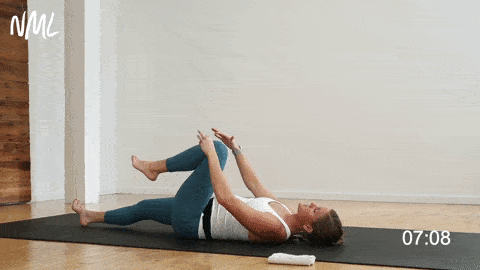
How To Do A Lying Hip Flexor Stretch (Knee To Chest)
- Lie flat on your back, both legs long and flat on the mat.
- Pull your left knee in towards your chest. Keep your right leg long, right toes pointed. Both hips are connected to the mat.
- Then, pull your left knee out towards your left armpit for a lying hip flexor stretch.
- Drive your right heel into the ground to actively stretch your right hip flexor as well.
- Hold this stretch for 45 seconds, release and switch legs during the next set.
Hip Flexor Stretches FAQs
There are a few reasons you might struggle with tight hip flexors. Some of the most common are: sitting at a computer all day (long periods of sitting can lead to shortening of the hip flexor muscles), participating in sports/physical activities that largely rely on the hip flexor (running, dance), or weak core muscles. Your hip flexors tend to jump in and try to ‘take over’ the work of stabilizing your pelvis and core if your core muscles aren’t strong enough.
Add hip flexor stretches and dedicated hip mobility exercises to your training routine one to three times a week. Keep in mind that it’s important to actively keep your body from tensing up as you hold a stretch. Think about “releasing” the tension and stiffness in each muscle group as you perform stretching and mobility exercises.
There are many benefits to improved hip mobility such as: increased active range of motion (ROM) and flexibility, preventing hip flexor strains and injuries, improved posture, preventing and healing back pain, decreasing sore muscles and improving strength training and athletic performance (hello deeper squats and lunges).
More Stretches
Stretch RoutinesPin these 5 Hip Flexor Stretches Your Body Needs
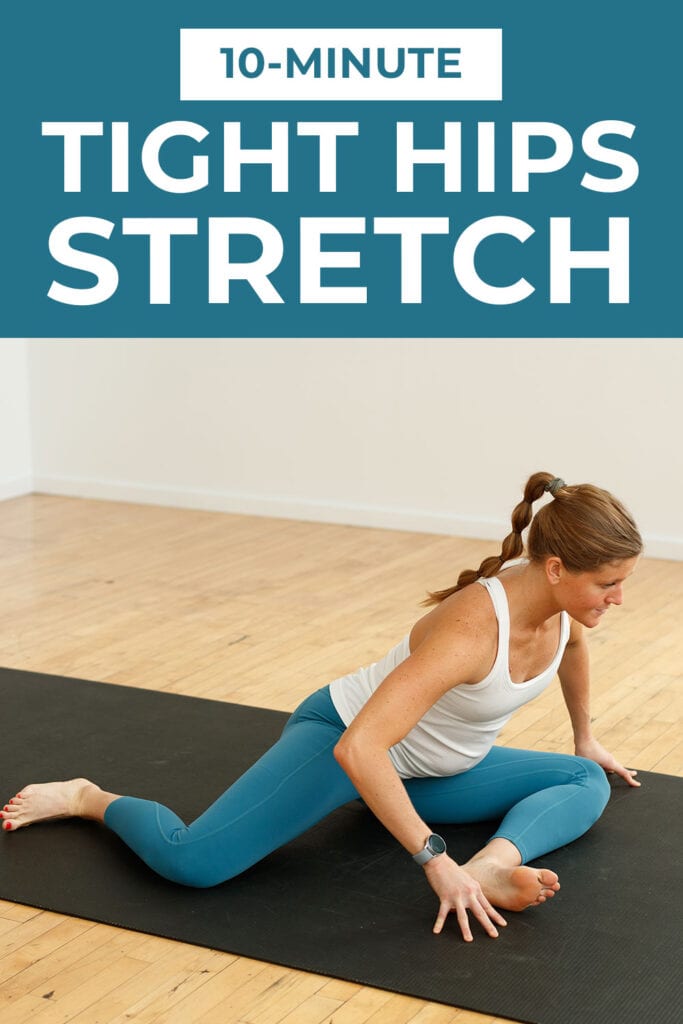
This post includes affiliate links. I do make a small commission for products purchased using these links (at no additional cost to you). Thank you for supporting Nourish Move Love, making the content you see on this blog possible.










